Ants in potted plants can be a common problem many plant enthusiasts face. These tiny insects are attracted to the moisture and nutrients found in the soil, making your beloved greenery their ideal home. They can cause significant damage to your potted plants by disrupting their root systems and attracting other pests.
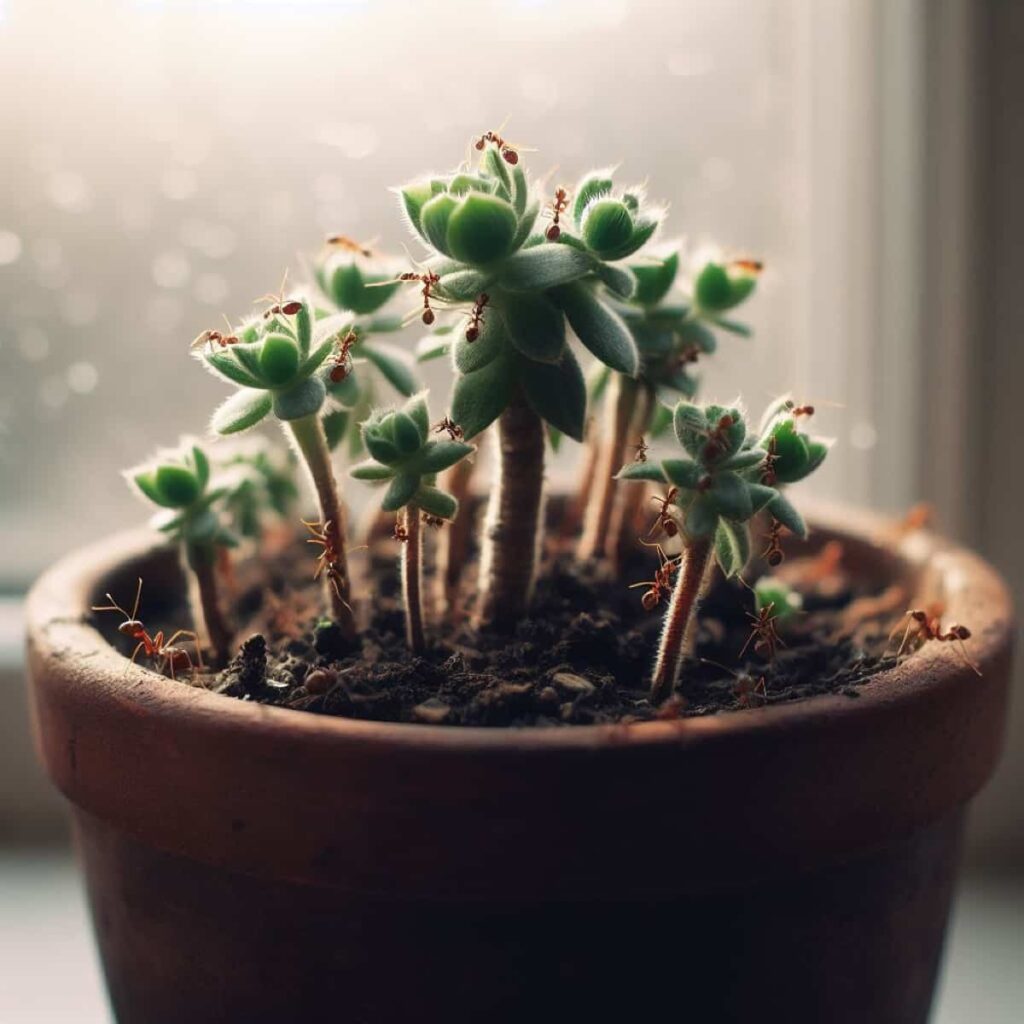
Some ant species have a symbiotic relationship with aphids, that are small insects that feed on plant sap. The ants protect these aphids from predators; in return, they receive honeydew produced by them as food. This causes further damage to your plants and attracts other unwanted pests like scale insects.
How to Get Rid of Ants in Potted Plants
Identifying the Ant Species Infesting Your Potted Plants
Different ant species have different preferences, so identifying them correctly can help you develop a more effective control strategy. One common cause is the Argentine ant, known for its large colonies and aggressive behavior. These ants are attracted to sugary substances, making them particularly problematic if you use honey or sugar-based fertilizers in your potted plants. Another ant species could be the carpenter ant, which typically nests in moist wood and can cause structural damage over time.
There might be signs of carpenter ants’ infestation if you notice sawdust-like material near your pots or hollowed-out stems. The odorous house ant is another frequent garden cause. When crushed, these tiny brown ants emit a foul odor and often trail along windowsills or countertops, looking for food sources. Fire ants may also camp in your containers, especially if they’re on the ground. Known for their painful bites and aggressive nature, fire ants can pose a threat not only to your plants but also to yourself.
Creating a Hostile Environment for Ants in Potted Plants
There are different ways to create a hostile environment for ants. One method to do this is by ensuring the cleanliness and hygiene of your pots and surrounding areas. Remove any decaying organic matter or debris that may attract ants, as they are attracted to food sources. Another method is to seal off potential entry points into your pots.
Check for cracks or gaps in the potting soil and the drainage holes. Seal them with tape or silicone caulk to prevent ants from infiltrating. Consider using ant-repellent materials such as diatomaceous earth or coffee grounds around your pots. These substances create an abrasive barrier that deters ants from entering your plants’ territory. Regularly inspect and monitor your potted plants for signs of ant activity.
In case you missed it: Natural Beehive Pest Management: Effective and Eco-Friendly Solutions
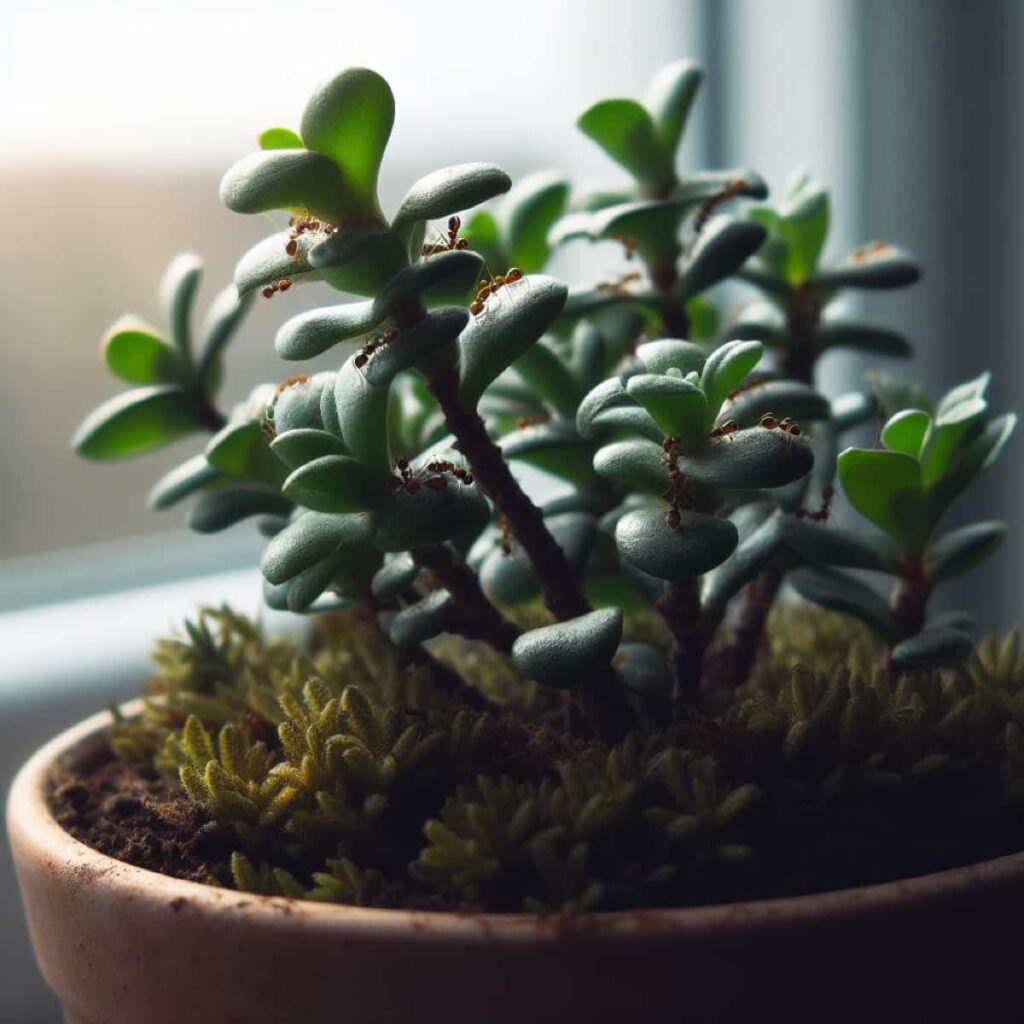
Removing Ant Trails and Nesting Sites in Potted Plants
The main step in getting rid of ants in potted plants is to remove their trails and nesting sites. Ants leave behind pheromone trails that act as a roadmap for other ants to follow, leading them straight back to your precious plants. So, it’s important to break these trails and disrupt their communication network. Start by carefully inspecting your potted plants for any signs of ant activity. Look for small mounds or openings near the base of the plant where they might be nesting. Once you’ve identified these areas, it’s time to take action.
Begin by physically removing any visible ant nests or colonies from the pots. Use a trowel or a gloved hand to scoop the soil around the nest, ensuring you eliminate all ants. Next, clean the pot thoroughly with hot, soapy water or vinegar solution to eliminate any remaining scent traces left behind by the ants. This will help prevent reinfestation. Also, ensure no nearby food sources could attract ants to your potted plants. Keep your kitchen clean and store food properly sealed away.
Using Natural Repellents to Deter Ants from Potted Plants
- Using essential oils – Their strong scents are unbearable for these tiny critters. Cinnamon oil, peppermint oil, and tea tree oil are all excellent choices. Dilute the chosen oil with water in a bottle and spritz it around the base of your potted plants or any ant trails you spot.
- Vinegar solutions – Ants dislike the strong smell of vinegar, so mixing equal parts of white vinegar and water can be an effective ant control method. Spray this solution on and around your potted plants to deter ants from coming near.
- Coffee grounds – They act as a fantastic barrier against ants. Sprinkle used coffee grounds around the pot base or directly onto the soil surface. This creates an obstacle course that ants find challenging to navigate through.
- Cinnamon powder – It is another handy tool in warding off unwanted guests in your potted plants. Its strong aroma disrupts their scent trails, making it difficult for them to establish nests nearby.
Homemade Ant Traps for Controlling Ants in Potted Plants
- Borax and sugar – Mix borax and sugar, then sprinkle this mixture near the base of your potted plant or along any ant trails you may have observed. Then, ants will be attracted to the sweet scent of the sugar, but once they consume the borax, it will ultimately kill them.
- Dish soap and water – Mix this product in a shallow container or bottle cap, then place it near your potted plants. The soapy solution acts as a sticky trap that will drown the ants when they come into contact with it.
- Vinegar – Fill small dishes or bottle caps with white vinegar and place them strategically around your potted plants where you’ve noticed ant activity. The smell of vinegar repels ants and helps keep them away from your precious greenery.
Applying Diatomaceous Earth as an Effective Ant Control Method
To apply diatomaceous earth to your potted plants, sprinkle a thin layer on the soil surface around the plant base or along ant trails. It’s important to note that while diatomaceous earth is safe for humans and pets, always wear gloves and a mask when handling it. The fine particles can irritate your skin and respiratory system if inhaled directly. Using diatomaceous earth as an ant control method offers a non-toxic alternative that works effectively without harming your beloved plants or contaminating the environment.
In case you missed it: Cauliflower Insect Pest Management: Effective Tips for Protecting Your Crop
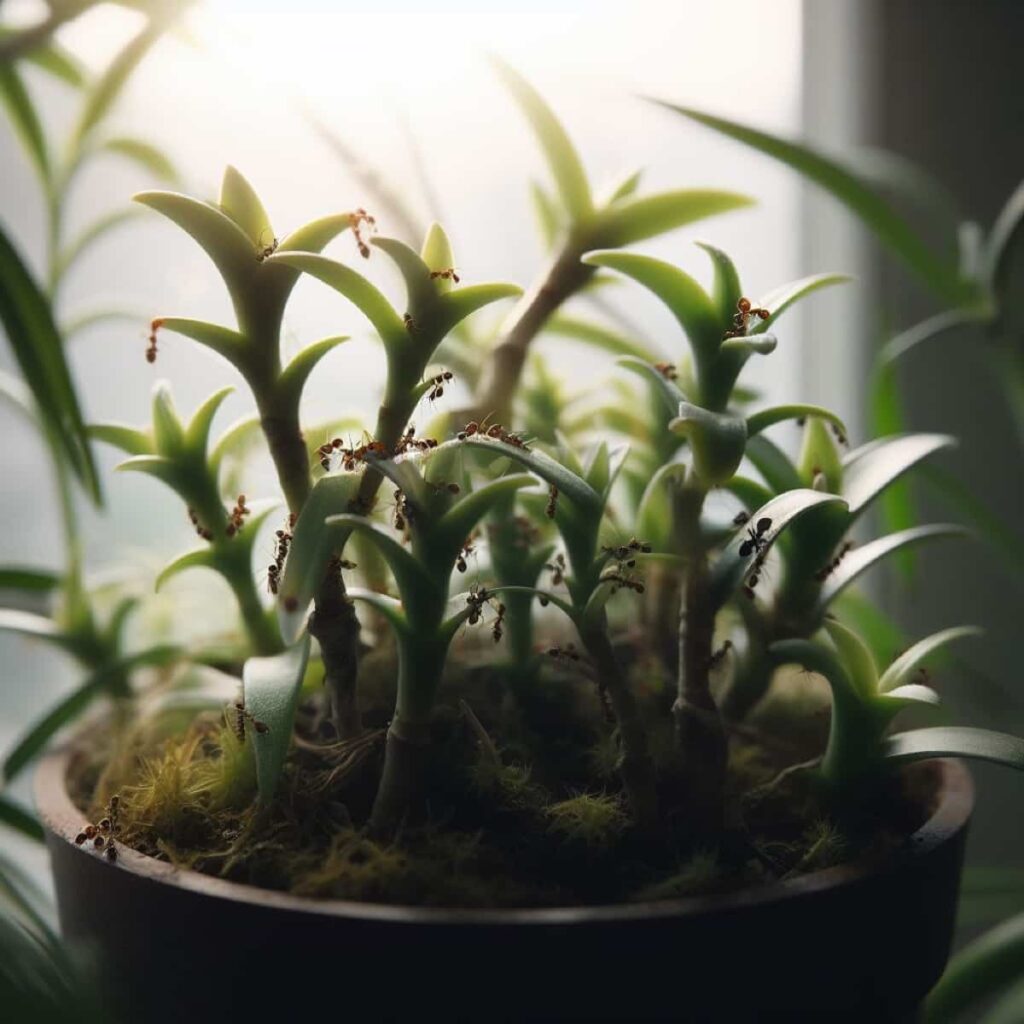
Utilizing Essential Oils to Repel Ants from Potted Plants
- Peppermint oil – Its strong scent drives ants away, disrupting their trail and discouraging them from making a home in your pots. Dilute peppermint oil and water and then spray it around the base of your plants or directly onto the soil.
- Tea tree oil – It has both antimicrobial and insect-repelling properties. Mix it with water and apply it to the areas where you’ve spotted ant activity in your pots.
- Clove essential oil – It possesses strong repellent qualities due to its high concentration of eugenol, which ants find unpleasant. Mix a small amount with water or carrier oil and use it as a spray around the edges of your pots to keep those pesky insects at bay.
Using Vinegar Solutions to Eliminate Ants in Potted Plants
Mix vinegar and water equally in a spray bottle to use vinegar as an ant control method. Shake well before spraying directly on the affected areas of your potted plants. Be sure to target any visible ant trails or nesting sites. The acidity of vinegar is what makes it effective against ants.
Employing Coffee Grounds as a Natural Ant Barrier in Potted Plants
To employ Coffee Grounds, sprinkle coffee grounds around the base of your potted plants. The strong aroma and texture of the grounds act as a deterrent to ants, keeping them at bay. When using coffee grounds as an ant barrier, it’s important to refresh them regularly. Rainfall or watering may wash away the scent over time. Replenishing the coffee grounds every few weeks ensures that ants stay far away from your potted plants.
Applying Cinnamon Powder to Repel and Kill Ants in Potted Plants
Cinnamon has strong ant-repellent properties due to its strong aroma, making it an excellent choice for controlling ant infestations. To use cinnamon for ants in potted plants, sprinkle it around the base of your potted plants or directly on the ant trails. The scent of cinnamon will deter ants from approaching your plants and disrupt their communication trails, preventing them from returning to the area. By consistently using this method, you can effectively deter and eliminate ants in your potted plants while keeping them safe.
In case you missed it: Effective Strategies for Managing Insect Pests in Cabbage: A Guide for Farmers and Gardeners
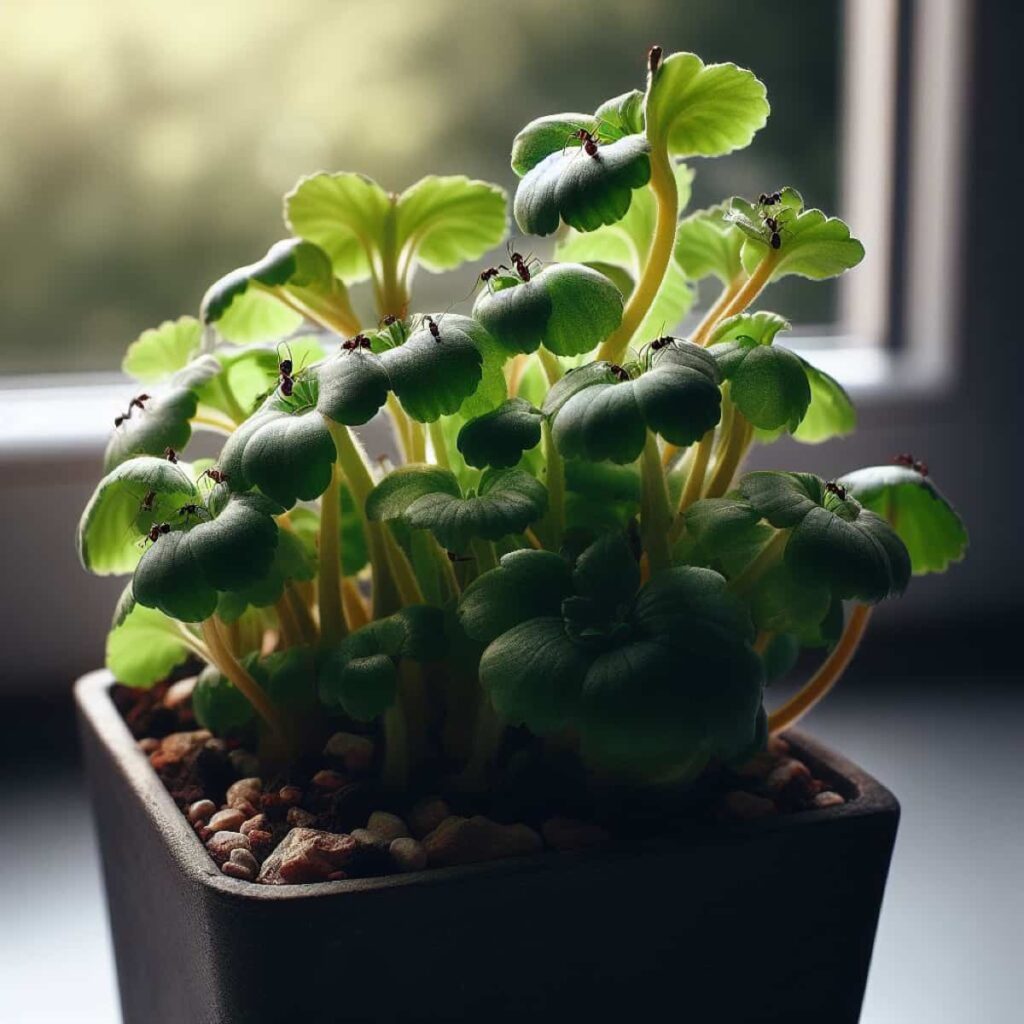
Using Citrus Peels as an Organic Ant Control Method in Potted Plants
To utilize these Citrus Peels, save the peels from oranges, lemons, or any other citrus fruit you consume. Place these peels near the infested areas of your potted plants. The strong smell of citrus deters ants and disrupts their pheromone trails. You can also create a homemade ant-repellent spray by boiling water with citrus peels and allowing it to cool.
Once cooled, strain out the peels and transfer the liquid into a spray bottle. Spritz this solution around your potted plants or directly onto ant-infested areas. Another option is to bury small pieces of citrus peel in the soil of your potted plants. This creates an unpleasant environment for ants and discourages them from nesting or feeding on plant roots.
Sprinkling Baking Soda to Get Rid of Ants in Potted Plants
To use baking soda, sprinkle it around the base of your plant or directly on the ant trails. Not only does baking soda kill ants, but it also acts as a deterrent. The alkaline nature of this white powder makes the environment less favorable for ants to thrive. By sprinkling baking soda regularly around your potted plants, you can prevent future ant infestations from occurring.
Deploying Beneficial Insects to Control Ant Infestations in Potted Plants
Ladybugs are the best beneficial insects to be introduced into potted plants. These colorful beetles feed on aphids, mealybugs, and other small insects, including ants. Another option is to introduce nematodes into your pots. Nematodes are microscopic worms that prey on various pests, including ants. Encouraging birds to visit your garden can also help control ant populations naturally. Birds like sparrows and robins will hunt for insects in potted plants, including ants. Providing bird feeders or birdbaths nearby can attract these helpful feathered friends.
Frequently Asked Questions about Controlling Ants in Potted Plants
How Do I Keep Ants Out of My Potted Plants?
The main way to stop ants is to ensure your plant pots have proper drainage holes. Excess moisture can invite ants into the potting soil. Another way is to create physical barriers around your plant pots using ant-repellent materials such as diatomaceous earth or cinnamon powder. Regularly inspect your potted plants for any signs of ant activity.
How to Get Rid of Ants in My Container Garden Naturally
Diatomaceous earth can effectively kill ants by dehydrating their exoskeletons. Sprinkle the diatomaceous earth around the plant base or directly on ant trails and nesting sites. Also, coffee grounds can be an organic ant barrier for potted plants.
In case you missed it: Pomegranate Fruit Fly: Symptoms, Treatment, Effective Management, Chemical, and Organic Control
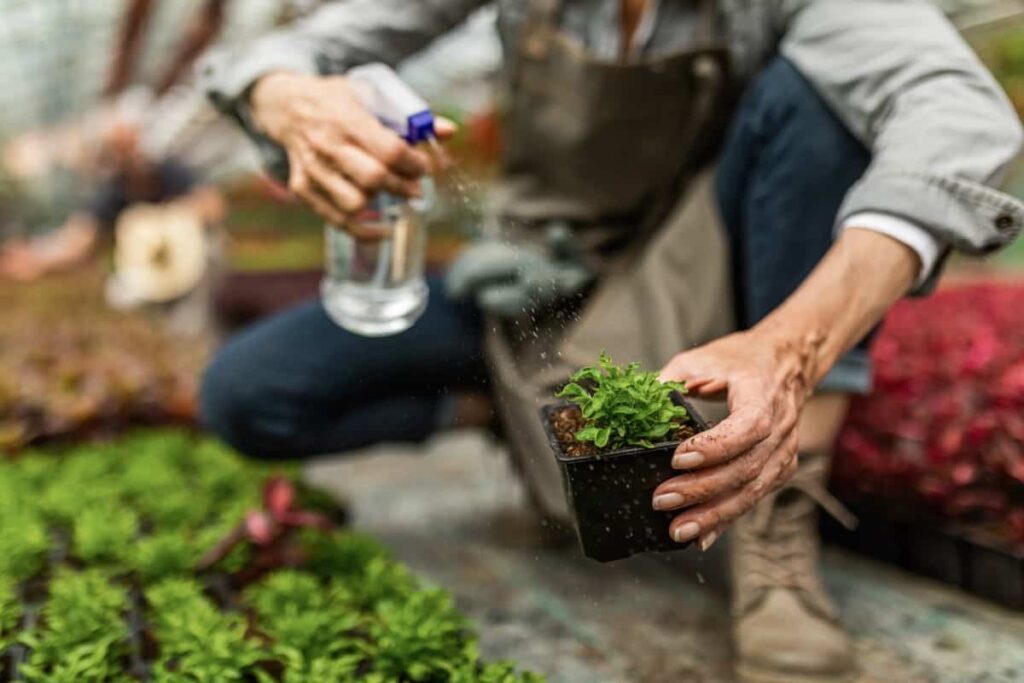
How to Eliminate Ants in Plants Naturally?
Baking soda is the best option to get rid of ants in potted plants naturally. It causes them to dehydrate and then die. However, it’s important to note that baking soda alone may not eliminate an ant problem in your potted plants.
How Do I Protect Potted Plants from Ants Naturally?
A soap solution is the easiest way to make ant repellent. Also, create a physical barrier around your pots. Another way is using citrus peels as a deterrent. Ants dislike the strong scent of citrus fruits, so placing orange or lemon peels near your pots can help repel them.
What is a Homemade Ant Killer for Potted Plants?
The main method is to use a mixture of white vinegar and water. This natural solution can help eliminate ants without the need for harsh chemicals. Spray this directly onto the areas where you see ants or along their trails.
Will Vinegar Kill Ants in Potted Plants?
Using vinegar solutions regularly can deter ants from infesting your potted plants. It’s important to note that while vinegar is a natural remedy, it may harm certain types of plants if used excessively or at high concentrations. Therefore, testing a small area before applying it extensively is best.
Do Ants Harm Plants in Pots?
No, ants do not eat plant roots. However, they can cause damage to them by excavating the soil around them. This can make the plant’s roots more susceptible to drying out and damaged by pests or diseases.
Different Ways to Get Rid of Ants in Potted Plants
| Methods | How to Use |
| Remove food sources | Keep your pots clean from spills or leftover food that may attract ants. |
| Seal entry points | Block any cracks or gaps in your pots to prevent ants from entering. |
| Use cinnamon | Sprinkle cinnamon around your plant pots as it acts as a natural ant-repellent. |
| Set up vinegar traps. | Fill small containers with vinegar and place them near infested areas to trap and kill ants. |
| Apply diatomaceous earth | Spread this substance around affected pots to dehydrate and eliminate ants. |
| Make citrus sprays | Mix water with citrus essential oils or lemon juice, then spray it onto the soil surface. |
| Utilize coffee grounds | Place used coffee grounds on top of the potting soil to deter ants due to their strong smell. |
| Apply dish soap solution. | Combine water with dish soap and spray it onto ant-infested areas or mix it into the watering can when watering plants. |
| Using Natural Repellents | Use essential oils, vinegar solution, coffee grounds, and cinnamon powder. |
| Utilizing Essential Oils | Peppermint oil, Tea tree oil, and Clove essential oil are the best oils for controlling ants in potted plants. |
In case you missed it: Top 15 Effective Organic Home Remedies for Garden Pests: Proven Control Methods
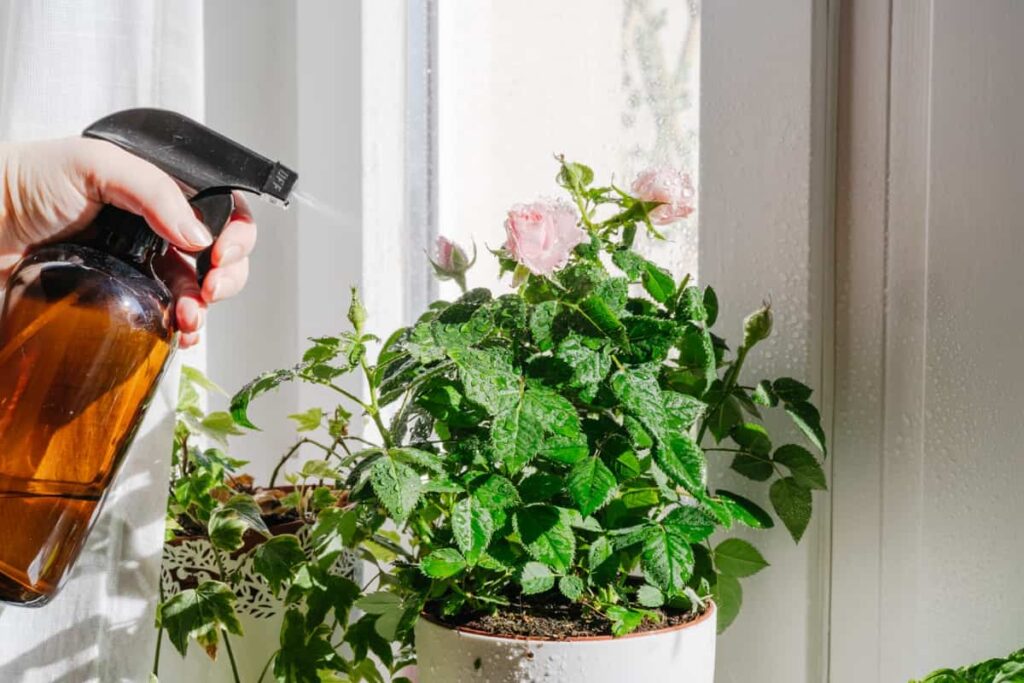
Conclusion
Once ants enter your potted plants, they tunnel through the soil, disturbing the roots and disrupting water absorption. This can affect stunted growth and even death of your beloved plant babies. Additionally, some ant species feed on aphids or other insects that may inhabit your plants, further exacerbating pest problems.
The impact of ants on potted plants goes beyond just physical damage; it can also affect plant health indirectly. Regularly inspecting your pots for signs of ant activity and maintaining good hygiene will keep those pesky intruders at bay.
- Budget Friendly Sheep Shed Ideas: Cheap and Low-Cost Tips
- How Much Do Cattle Farmers Make: Revenue Streams in Cattle Farming
- Management Pests and Diseases in Your Cotton Field
- Sheep Farming Business Plan for Beginners
- Aquaponic Farming at Home: A Step-By-Step Guide
- Profitable Village Farming Business Ideas in 2024
- High-Yield Aquaculture: Fast-Growing Fish for Farming
- Effective Fish Pond Construction Techniques for Beginners
- Irrigation and Water Management in Pineapple Farming
- Blossom to Harvest: Mastering Flowering and Pollination in Papaya Farming
- Pig Fattening Essentials: From Selection to Sale for Beginners
- Raising Wagyu Cattle: A Complete Guide for Premium Beef Production
- Soil Types and Their Water Holding Capacity
- Optimizing Irrigation Schedules for Coconut Groves for Enhanced Yield
- Espresso Your Garden: Coffee Grounds for Healthier Acid-Loving Plants
- The Best Soil Mix for Snake Plants: How to Mix Your Own Snake Plant Soil
- Green Thumb Success: Expert Tips for Cultivating Greenhouse Beans All Year Round
- Bloom All Year Round: The Ultimate Guide to Indoor Hyacinth Care
- Eco-Friendly Gardening: How to Make Liquid Fertilizer from Kitchen Waste
- Ultimate Guide to Grow Anise in Pots: Explore Seed Propagation to Harvesting
- Guide to Raising Chester White Pigs: Discover Breed Facts to Growth Management
- Mastering the Elegance: The Ultimate Guide to Weeping Cherry Tree Care, Planting, and Maintenance
- Ultimate Guide to Planting Garlic in Grow Bags: Growing Strategies for Beginners
- How to Fix Spider Plant Leaf-Related Problems: Natural and Organic Remedies
- 10 Reasons Why Your Tulsi Plant is Shedding Leaves: Home Remedies and Solutions
- Optimizing Growth and Yield: The Advantages of Palm Bunch Ash Fertilizer
- Utilizing Neem Oil Extract as a Natural Pesticide for Hydrangea
- From Soil to Harvest: Various Ways in Which Farmers Can Use AI Tools
- Steps to Encourage and Induce Citrus Flowers: A Comprehensive Guide
- How to Fix Snake Plant Leaf-Related Issues: Natural and Organic Remedies
- Transform Your Garden into a Fragrant Oasis with Raat Ki Rani (Night Blooming Jasmine)
- Discover the Ideal Chicken Breeds for Philippine Farms
- How to Create a Poultry Egg Farm Business Plan for Profits
- Grow Lemon Cucumbers Like a Pro: Insider Techniques for Bountiful Yields
- Ultimate Guide to Caring for Your Pink Princess Philodendron: Tips for Thriving Variegation
- Areca Nut Profit Per Acre: Calculating Yield and Cost of Cultivation
